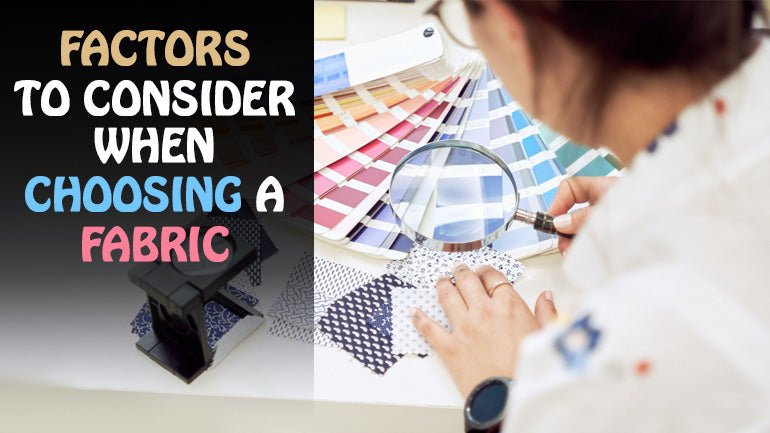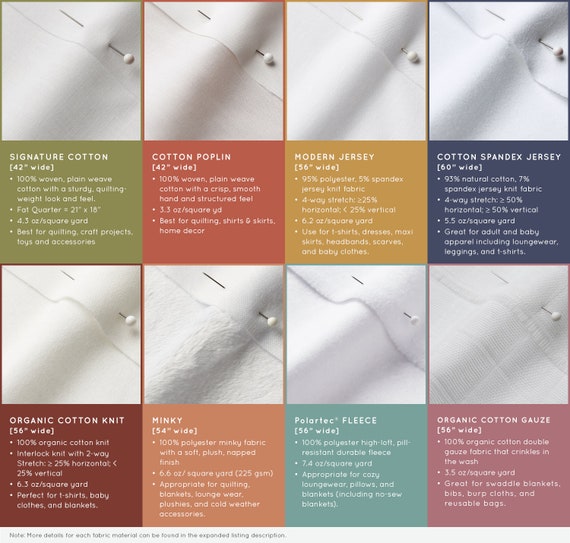Getting The All 4 Way Stretch Fabrics To Work
Getting The All 4 Way Stretch Fabrics To Work
Blog Article
The Definitive Guide to All 4 Way Stretch Fabrics
Table of ContentsThe 10-Second Trick For All 4 Way Stretch Fabrics5 Easy Facts About All 4 Way Stretch Fabrics ShownAll 4 Way Stretch Fabrics - An OverviewThe smart Trick of All 4 Way Stretch Fabrics That Nobody is DiscussingThe Ultimate Guide To All 4 Way Stretch FabricsSome Known Factual Statements About All 4 Way Stretch Fabrics Rumored Buzz on All 4 Way Stretch Fabrics
As I likewise desire UV security from my garments when I head out, I would choose a densely woven cotton textile. Also the underclothing is much better in cotton (No spandex bands anywhere near the skin). Have a look at the finest fabrics appropriate for making summer clothes. One even more consideration when getting the textile is the way it will after washing.A winner would certainly be to purchase least 10% additional textile. If you can get preshrunk material, this is the most effective. Preshrunk textile will have labels that will certainly claim" and so on. If you are seeking a textile that will certainly not stretch or lose form, you can try to find the "anti-sag" label.

If you are matching the color, like selecting the lining for the primary material or selecting material to include as trim, this is particularly crucial. The textile display rooms will generally have a light well where you can see the fabric in sunshine (or a window with great light from outside).
The 45-Second Trick For All 4 Way Stretch Fabrics

Many textiles are regarding 44 broad. When you most likely to get fabric, price quote how a lot you want initially and afterwards most likely to the store. Take a look at this post to recognize the response to this regularly heard inquiry "How much textile do I need". With a fat quarter, you will certainly get an 18 large by 22 long.
Some excellent bargains can be had this way. In dressmaking, we purchase textile by the yard/meter.
All 4 Way Stretch Fabrics Fundamentals Explained
In a quarter of a yard, you get a 9 by 44 strip of fabric, which is about 22 cm in length. It is always better to purchase larger fabric. According to the width of materials, they may be called single-width and double-width. Single width is usually as much as 49 inches in width and double size approximately 60.
You can learn more about backyard to meter conversion below. Have a look at this blog post on reviewing a tape procedure Select materials that are not as well tough or rigid, or you would not be comfy in them. Bed linen, Denim, flannel, For colder environments, pick wool (100% as well as woollen blends) woollen tweeds, wool crepe; it basically depends on what trousers you are discussing Tailored pants, Unstructured Pant, Combined, Jeans.
Corduroy fits to use fabric to select for pants. All cotton materials benefit children. You can select a cotton satin stretch or a cotton twill or cotton satin or grass. Knit materials are also great for children you can opt for woollen knits. Interlock knits are dressmaking knits that stretch throughout the grain.
An Unbiased View of All 4 Way Stretch Fabrics
Cotton yard fabric in appealing prints is great. Silk jersey is a fantastic material for stitching skirts, as is Ponte Roma weaved material.
Drapey rayons, soft wool, lycra blends, and stretch velvets are all suitable for stitching skirts. Woollen (Woollen crepe has a great drape and provides adequate framework for coats; wool tweeds are fantastic as well), Linen & Flannel. Raw silk, satin, taffeta, velour, Shoelace, silk chiffon, and Organza are all great for making outfits.
You can acquire medium-weight textiles with some spandex/elastane added for a fitting bodycon-type outfit. For drapey gowns, you can choose lightweight textiles. Jacket has a drapey fit such as this. Crepe, challis, and charmeuse are all drapey fabrics matched for this design. Have a look at these posts: Ideal material for making casual outfits and tops; Names of different dresses. Rayon, Acetate, and cotton lining products are commonly used.
Lightweight cotton material, Cambric, Chintz, Twill, Faille, Seersucker, Poplin, lightweight woven broadcloth, batiste, bed linen, eyelet are good for making t shirts and blouses. I enjoy chiffon blouses. Smooth satin fabric is good for making ventilated tops. Look into the message on the 7 ideal materials for making shirts. Making stoles and scarves require different considerations for the textile check out this article on the materials for making headscarfs When getting patterned textile (a lot of the formed fabric includes a size of 45 or 54 inches), there will be pattern repeat in these textiles, and this should be taken right into factor to consider when reducing material as well as buying them i.e., if you desire to match the patterns at the seams.
Top Guidelines Of All 4 Way Stretch Fabrics
The themes will be dispersed in an organized fashion on the textile. You might discover in some cases If the print is not placed on the textile properly, it can not be matched or lined up when constructed without misshaping the textile and the hang of the garment.


You can find out more about grain and grainline of textile here. The material weight depends on lots of factors like the weave, fiber type, and so on and is usually represented by GSM. GSM can vary from 60 -700; 700 being the GSM of really top quality woolen fabric. A denim textile has a GSM of 400, relying on the weave.
However something you need to maintain in mind is that higher material weight does not signify greater textile quality (bi stretch fabric). It just is an indicator of the suitability of the material for a certain task. You can pass by high fabric weight textile jeans for a light-weight drifting shawl. Recognizing the textile weight serves when contrasting the very same kind of fabrics, but even this will certainly depend upon its application.
Have a look at the checklist of the 70+ various textile finishes and therapies. Essentially, one of the most important standards to look for in the fabric you buy are as follows. The number of strings per inch of fabric (yarns-per-inch). Higher the thread count higher the variety of threads woven per inch, and the higher the top quality.
8 Easy Facts About All 4 Way Stretch Fabrics Described
In top notch textile, this equilibrium (either in numbers or in dimension) will certainly constantly be preserved. Procedures utilized on material to enhance appearance and performance.
A two-ply yarn is superior to a single-ply yarn.
If you are preparing yourself to start a new embroidery project, choosing a material will be one of the most important action as soon as you decide what you wish to make. After you've gone to all the difficulty and cost of buying the stitching equipment you like, a pattern you like, and a textile you like, you want the completed item to be a success? One method to achieve that is to start by making certain your textile is absolutely appropriate for the job.
Examine This Report about All 4 Way Stretch Fabrics
As an example, if you're making a quilt, you'll instantly wish to make use of quilter's weight cotton for best outcomes. However what happens if you wish to make a thing of clothing? Exactly how do you recognize which fabric will provide you the ideal result? Choosing a fabric just due to the fact that you love the print or style on it isn't always the most effective Recommended Reading technique.
You get the image. So to avoid doing an entire project for essentially absolutely nothing, we have actually assembled some ideas to assist you decide which material is best for your job. Let's claim you already have a job in mind; how do you discover the ideal textile for it? One means is to consider comparable things in storesor ones you currently have.
Think of the attributes you want the ended up item to have. Do you desire a strong shade or a print? If you are making a non-wearable product such as a pillow cover or pot holder, use a sturdy textile such as canvas.
There is a lot details out there regarding textiles, their qualities, and their uses, it could reach be frustrating! Do not attempt to take it in all at as soon as; simply start with the task at hand. Learn all you can regarding the material you make use of for this task.
Report this page